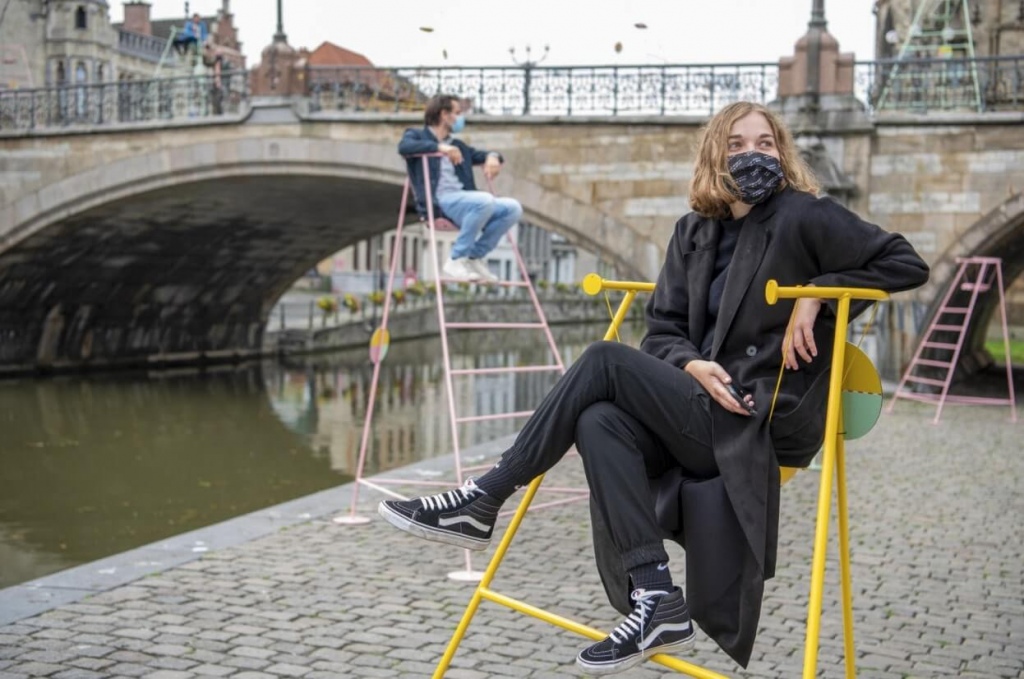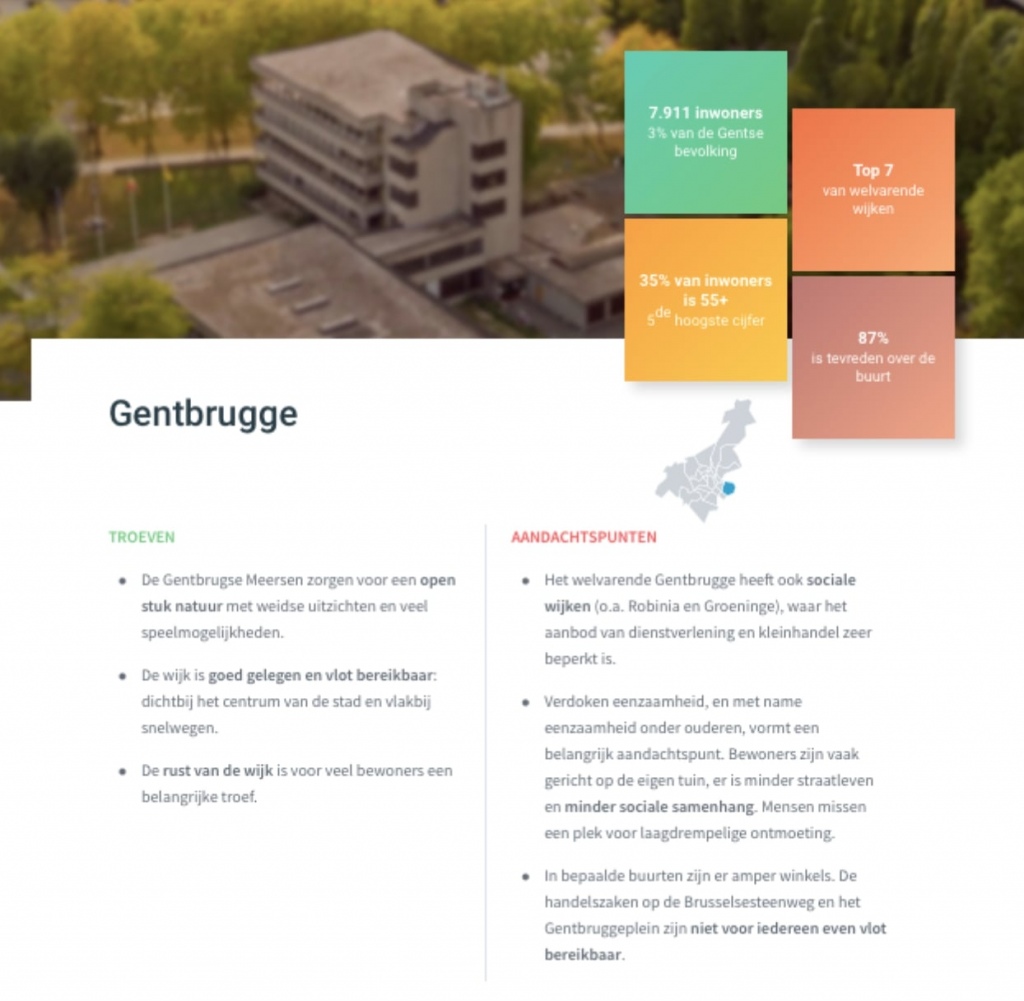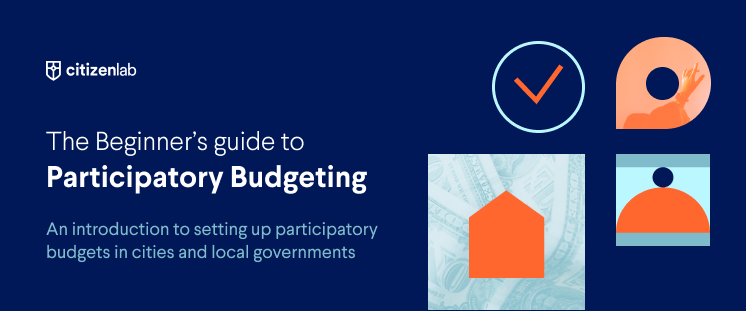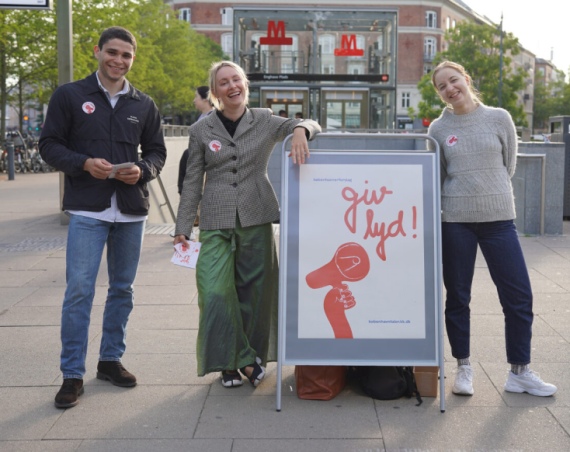Ghent, known for its beautiful market squares and stunning medieval city center, is the capital of the Belgian province of East-Flanders. With more than 260,000 inhabitants, Ghent charmingly combines the hustle and bustle of a bigger city with a small town’s cozy atmosphere.
The city of Ghent has a longstanding tradition of participation. Recently, the city has not only quintupled its budget for participation projects but has also gathered an extensive team of participation experts and “neighborhood directors” to make co-creation even easier. It comes as no surprise, then, that 2020 brought the second edition of the neighborhood budgeting project ‘Het Wijkbudget.’
Aiming to optimize the city’s neighborhoods, Ghent has freed a total budget of 6.25 million euros, allocating between 150,000 to 350,000 euros per area. For the first 11 neighborhoods, this project launched in September of 2020. The others will have to wait a little longer but will finally be able to get their hands dirty come September 2021.
Neighborhoods in the spotlight
If you take a long, critical look at your neighborhood, what would you change? What are its pain points and opportunities? What can be optimized, and what should be reduced? Ghent’s inhabitants were asked to reflect on the neighborhoods they frequent and share their ideas on the city’s platform, which has become the online hub of Ghent’s participation strategy. Anything goes, but to be considered for implementation, projects need to be supported by the neighborhoods’ inhabitants and reasonably implementable within two years.
“Every citizen, association, organization, or entrepreneur from Ghent can develop and share an idea. Through dialogue and cooperation with the city and other thinkers, dreamers, and doers, these projects will be further developed and implemented”
The project was launched with a large-scale awareness campaign that garnered a lot of press attention. In a brilliant stunt, the city council placed large, colorful chairs on the Gras- and Korenlei. The idea? To make inhabitants look at their city from different perspectives.

Co-creation and social cohesion
Of course, the immediate goal of ‘het Wijkbudget’ is to involve citizens in the co-creation and optimization of their environments. But through the ‘Wijkbudget,’ we also aim to strengthen the social cohesion within those neighborhoods. The city is making extra efforts to reach vulnerable social groups and hear their opinions on improvements. Every citizen’s voice matters equally, but not every citizen is equally likely to participate. The city must ensure that the input is representative of its diverse identity.
Allotted panels to boost representation
One of the ways to ensure different voices are being heard is by setting up neighborhood panels. In two vulnerable neighborhoods, Muide-Meulestede-Afrikalaan and Drongen, Ghent organized community panels, each consisting of 20 inhabitants.
In the first phase, 500 people were drawn by lot and contacted by phone. To ensure the strongest possible representation, the administration asked candidates a couple of questions about their family composition, education level, and other personal signifiers. Finally, they carefully selected 20 representatives to offer the greatest diversity in terms of age, cultural and social background, gender, etc.
The citizens in the community panel will meet regularly between November 2020 and December 2021. They’ll aim to deliberate with project applicants and offer advice based on their neighborhood’s specific DNA. After all, sharing ideas is one thing; rooting these ideas within a particular area is another entirely. The community panels ensure that ideas are anchored within the different communities and that potential implementations will be more successful.
Neighborhood DNA
And the city went even further. The administration established an in-depth DNA analysis for each of its neighborhoods, containing the area’s most relevant statistics, strengths, attention points, and vulnerabilities. Which percentage of the Ghent population resides in this neighborhood? What’s the social make-up of this area? What are this neighborhood’s specific characteristics?

These reports, completed with photos, quotes, and graphs, can be found on the city’s website and platform and offer a reliable baseline to define each neighborhood’s most pressing needs.
When launching a neighborhood project, a logical first step for cities is to research and understand the current situation. But what makes these neighborhood DNAs particularly strong is that they go beyond the obvious metrics. The vulnerabilities pointed out in some neighborhoods are common issues that are not discussed often enough. One example: feelings of loneliness among the older population. Only when you identify something as a problem can you start tackling it in that way. Bravo, Ghent!
A 500-idea potential
In the first phase of the ‘Wijkbudget’, which included 11 out of 25 neighborhoods, more than 13,000 people visited the city’s platform. 3,340 people and organizations registered and shared around 500 ideas. 472 of these ideas are now being analyzed and elaborated.
The city decided to offer inhabitants the opportunity to vote for their favorite ideas, even in this first phase. Some ideas, such as creating a ‘Groen Spoor’ (Green Trail) in Sint-Amandsberg, received more than 150 votes. These numbers, of course, can continue to grow as the project progresses.
Up next: citizens around the table
The shared ideas are currently being analyzed to see how relevant and feasible they are. Through the organization of ‘Dialoogtafels’ (‘Tables of Dialogue’), the city administration aims to further elaborate the ideas and projects currently on the eh, table. Citizens can freely sign up to take part in these dialogue sessions.
With only 11 out of 25 neighborhoods having shared ideas so far, this project is still in full swing. But this first wave has, of course, led to valuable lessons the administration will take into account with the roll-out of the second wave. In general, the administration was delighted with the number of participating citizens and the quality of the input.
And besides ‘het Wijkbudget,’ Ghent’s platform will host more participation projects in the upcoming year. Next up? A citizen consultation on the locations of 2,000 charging stations for electric cars. Ghent has developed a taste for participation, and that’s something we can only praise!
Want to launch a participatory budgeting project too?
Before diving in, download our Beginner’s Guide on Participatory Budgeting. You’ll find:
- A clear definition of participatory budgeting and the idea that lies behind it;
- An overview of critical success factors and possible hurdles;
- A clear explanation of the different types of projects and their specific benefits;
- Real-life case studies from across the globe.

And if you’re curious about how the CitizenLab platform can help you achieve your participation goals, schedule a chat with our participation strategists!





